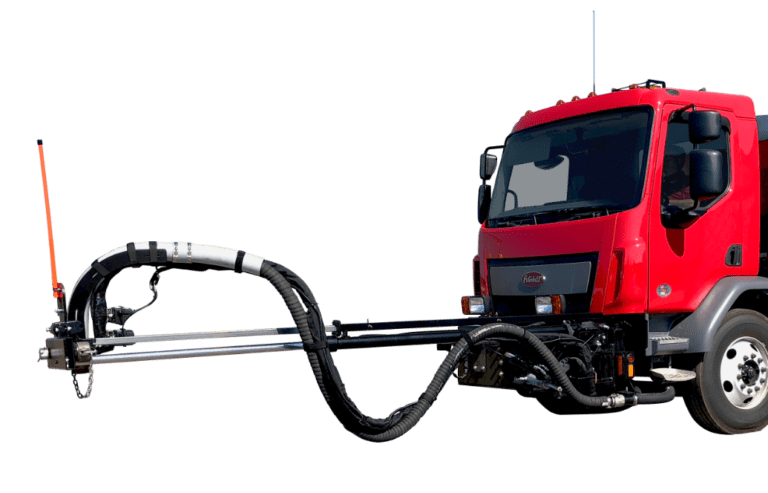Roadway Pothole Patcher
Pothole Patcher Design using Electronic and Hydraulic Controls Solutions
Using hydraulic and electronic control technologies, pothole patcher vehicles replace the need for manual asphalt repair on roads. City streets and roads that see heavy traffic may require frequent repair and maintenance to ensure safe driving conditions. By using mobile equipment, municipalities have the ability to quickly repair potholes with minimal traffic disruptions while protecting the lives of maintenance workers.
The Cross Company engineering team takes a different design approach to mobile hydraulic vehicles design. A DPX100 mobile sectional valve, manufactured by Walvoil, solves configuration and set up problems. The DPX mobile sectional valve is a pressure-compensated valve and offers a wide selection of spool flow ratings, so the valve can easily be customizable for each individual work function. In the case of a mobile pothole patcher, these functions can range from precision boom control to conveyor speed.
The DPX valve also has the benefit of low hysteresis, or high repeatability, which means that functionality from machine to machine is predictable. By coupling the DPX valve with production operator setup screens in the IFM display, our engineering team has seen production setup time reduced by almost one day per vehicle.
Improving setup time is often a key issue when manufacturers evaluate project requirements. In mobile municipal equipment, traditional hydraulic valve systems are complex, have multiple adjustments, and are difficult to set up. The systems require a complicated set up procedure that sometimes takes more than a day to fine-tune.
Additionally, hydraulic valves tend to have high hysteresis, which causes variations in performance from machine to machine.

Decrease lead time for pothole patcher production
Custom manufacturing solutions are most impactful when they can be easily reproduced across a fleet of vehicles. Hydraulic and electronic controls designed to increase performance on road patchers are no different.
A controls package that includes organized wiring harnesses, a quick disconnect controls enclosure with fused power distribution, and an upgraded human-machine interface (HMI) standardizes installation and simplifies set-up for the OEM. Mobile machine integration packages can be kitted so the hydraulic and electronic controls just need to be mounted and plugged in. As a best practice, the Cross Company integration team also provides well-documented engineering and assembly drawings, which are also essential to efficient production, QA and troubleshooting, and future maintenance.
Contact Cross Company for more information about how a pothole patcher from our mobile systems integration team can benefit your operation.
